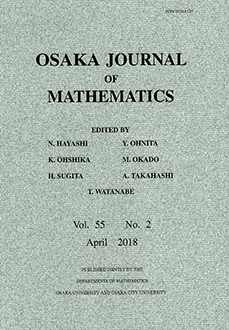Abstract
We analyse analytic properties of nonlocal transition semigroups associated with a class of stochastic differential equations (SDEs) in ${\mathbb{R}}^d$ driven by pure jump-type Lévy processes. First, we will show under which conditions the semigroup will be analytic on the Besov space $B_{p,q}^ m({\mathbb{R}}^d)$ with $1\le p, q\lt\infty$ and $m\in{\mathbb{R}}$. Secondly, we present some applications by proving the strong Feller property and give weak error estimates for approximating schemes of the SDEs over the Besov space $B_{\infty,\infty}^ m({\mathbb{R}}^d)$. The choice of Besov spaces is twofold. First, observe that Besov spaces can be defined via the Fourier transform and the partition of unity. Secondly, the space of continuous functions can be characterised by Besov spaces.
Acknowledgments
First we would like to thank the referee for the patient and helpful remarks which improved the paper.
Secondly, we would like to mention that Pani Fernando and Kistosil Fahim were supported partially by
the Austrian Science Foundation, project P 28819. Kisosil Fahim was also partially supported by Austrian Agency for International Cooperation in Education and Research (OeAD), Centre for International Cooperation and Mobility (ICM) with reference number ICM-2019-13458.
Citation
Pani W. Fernando. Erika Hausenblas. Kistosil Fahim. "On Markovian semigroups of Lévy driven SDEs, symbols and pseudo-differential operators." Osaka J. Math. 59 (1) 15 - 63, January 2022.
Information





